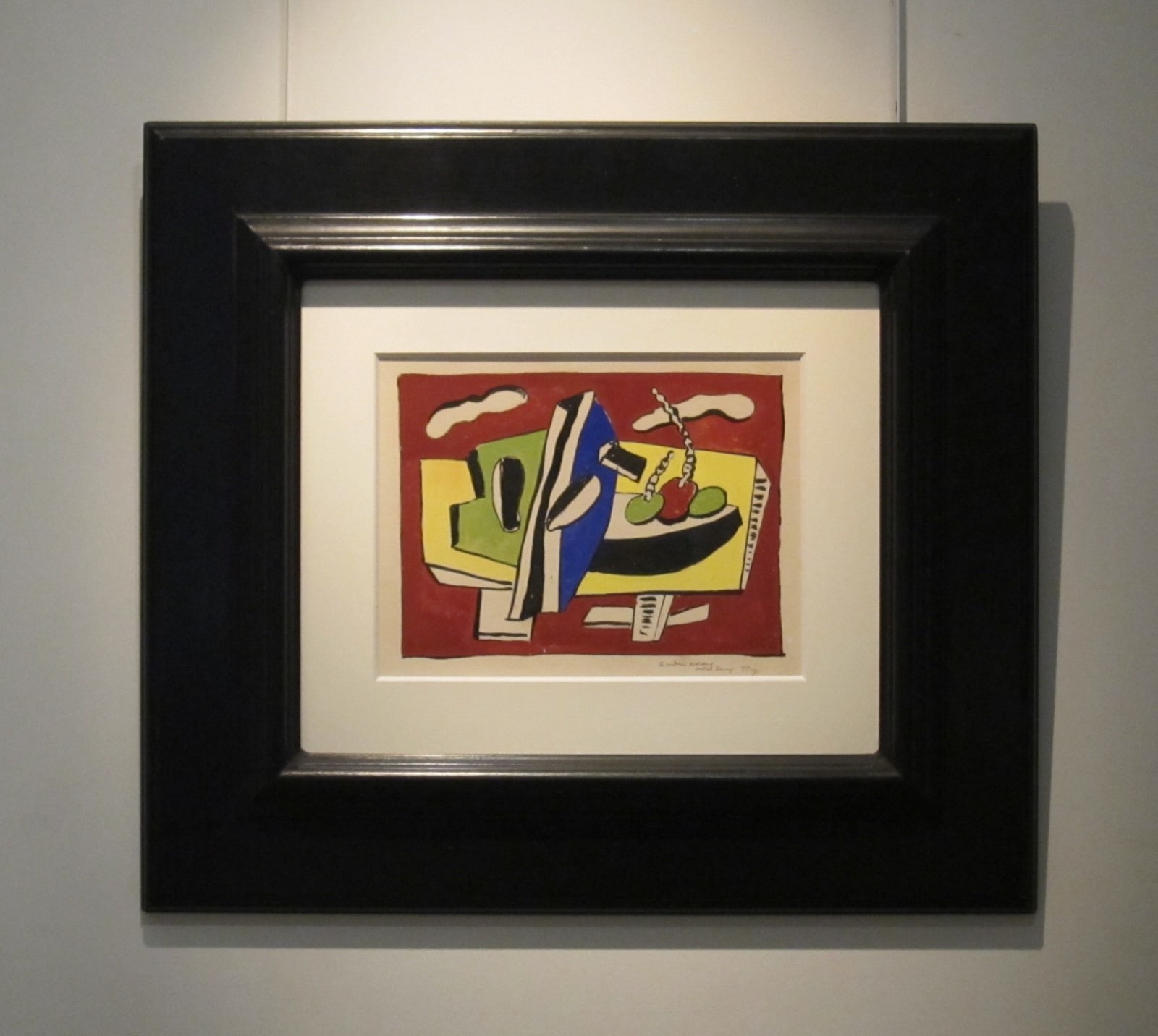Fernand Léger French, 1881-1955
58 x 65 cm (avec cadre)
Plus d'images
This work, a study for the painting Still life, yellow and blue held in the collections of the Kunsten Museum of Modern Art in Aalbord in Denmark, was given to Madame Albert Morancé by Léger in 1938.
Albert Morancé, administrator and director of France's Fine Arts Ministry art photographic archives, set up his own publishing company in 1920 in the rue de Fleurus in Paris that specialised in the fine arts, architecture and interior design, as well as founding the House of Contemporary Master Engravers. He published numerous reference works on architecture and interior design : Süe and Mare, Jacques-Émile Ruhlmann, Eileen Gray, Pierre Chareau, Frank Lloyd Wright. He made friends early on with Fernand Léger and published prints by the artist.
In 1923, Jean Badovici a recent graduate from the Special School of Architecture, managed to persuade Albert Morancé to launch the magazine Living Architecture. He became its editor-in-chief. Badovici kept this avant-garde magazine going for 10 years (1923-1933). It rapidly became an influential voice of the International Style (Bauhaus, Constructivism, De Stijl) by supporting modern architects, Le Corbusier in particular. Léger participated in it fully. In 1938, he produced a fresco for a house bought by Badovici in Vézelay. This work can now be found in the Zervos Museum in Vézelay.
Jean Badovici introduced Christian Zervos, with whom he had shared an apartment when he was a student, to Albert Morancé, who taught him publishing and entrusted him with the responsibility of two new quarterly magazines : The Art of the House in 1923, and Art of Today (1924-1929). For its luxury edition, the magazine was enriched with original prints by Matisse, Chagall, Dunoyer de Segonzac,
Dufy, Maillol, Laurencin, Vlaminck, Bonnard, Foujita, Marquet and Rouault. Zervos broke free in 1926 and launched his own magazine : The Art Notebooks.
Gaston Morancé took over from his father at the head of the publishing house.
Albert Morancé, administrateur-directeur des archives photographiques d’Art au Ministère des Beaux Arts, crée en 1920, rue de Fleurus à Paris, sa maison d’édition spécialisée dans les beaux-arts, l’architecture et la décoration, et fonde la Maison des maîtres graveurs contemporains. Il éditera de nombreux ouvrages de référence sur l’architecture et la décoration : Süe et Mare, Jacques-Émile Ruhlmann, Eileen Gray, Pierre Chareau, Frank Lloyd Wright. Très tôt, il se lie d’amitié avec Fernand Léger et édite des estampes de l’artiste.
En 1923, Jean Badovici, jeune diplômé de l’Ecole Spéciale d’Architecture, réussit à convaincre Albert Morancé de lancer la revue L’Architecture vivante. Il en sera le rédacteur en chef. Badovici va faire vivre cette revue d’avant-garde pendant 10 ans (1923-1933). Elle devint rapidement un organe influent du Style International (Bauhaus, Constructivisme, De Stijl) en soutenant les architectes modernes, en particulier Le Corbusier. Léger y participa pleinement. En 1938, il réalisera une peinture murale pour la maison achetée par Badovici à Vézelay. Cette œuvre se trouve aujourd’hui dans les collections du musée Zervos à Vézelay.
Jean Badovici introduira Christian Zervos, avec qui il avait partagé un appartement durant ses études, auprès d’Albert Morancé, qui le formera aux métiers de l'édition et lui confiera la responsabilité de deux nouvelles revues trimestrielles : L’Art de la maison en 1923, et L’Art d'aujourd’hui (1924-1929). Cette revue sera enrichie, pour l’édition de luxe d’estampes originales de Matisse, Chagall, Dunoyer de Segonzac, Dufy, Maillol, Laurencin, Vlaminck, Bonnard, Foujita, Marquet et Rouault. Zervos s’émancipera en 1926 en lançant sa propre revue: Les Cahiers d’art. Gaston Morancé succédera à son père à la direction de la maison d’édition.
Provenance
Madame Albert Morancé
Gaston Morancé, Paris
Collection privée, acquise de cette dernière en 1984





